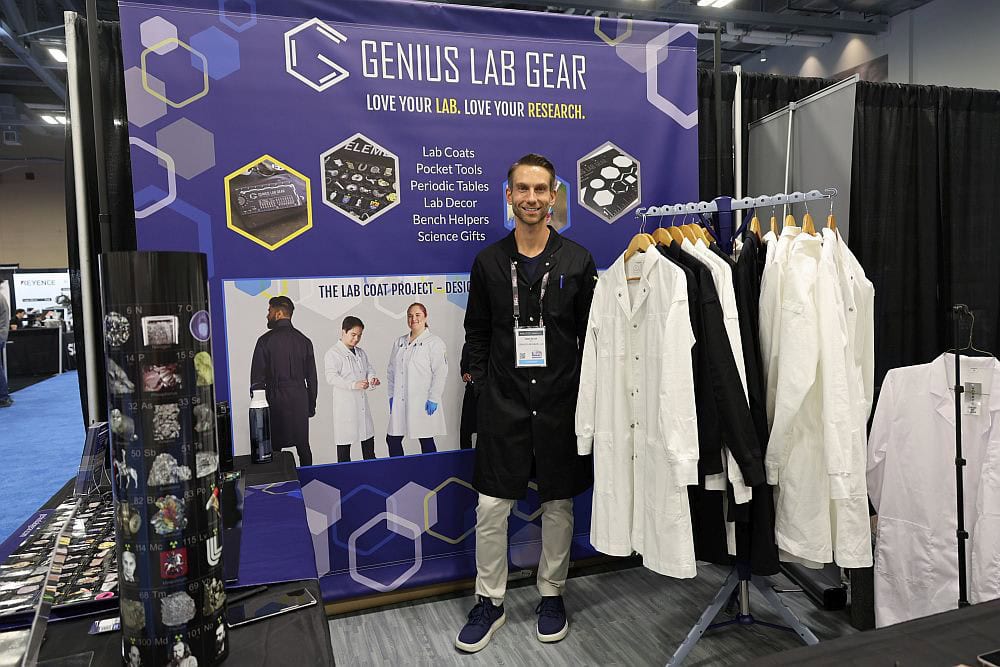A hat tip to Quality Magazine on this. As part of their PhD thesis work, Steve Bottiglieri and Andrew Portune, graduate students at Rutgers, worked with equipment suppliers to develop a novel and relatively quick non-destructive testing approach that seems to be well suited for inspecting certain high-performance ceramic products that are so critical (such as armor) that each must be evaluated.
One commonly used inspection tool for ceramic manufactures is conventional ultrasound inspection which typically relies on a single probe. Some manufacturers use an operator to direct the probe and others use a linear automated probe to conduct the testing.
Bottiglieri and Portune, working under the guidance of Richard Haber, director of Rutgers Ceramic, Composite & Optical Materials Center, wondered if there was a way to accelerate the inspection process. (Haber, an ACerS fellow, and Portune presented a related paper at the ICACC 2010 conference on “Advanced Nondestructive Ultrasound Characterization of Transparent Armor Ceramics.”)
In brief, according to QM, the Rutgers team found a way to integrate an Olympus OmniScan phased array flaw detection probe, composed of 64 piezoelectric elements, with a Techno Inc. gantry machine, which can be programmed to automatically sweep over the ceramic object. A OmniScan unit captures the ultrasonic data simultaneously with positional information. The net effect is that the phased array system can measure ceramic properties while sweeping over large sample areas, and data from the gantry allows inspectors to develop accurate property maps of each object.
Bottiglieri says his team’s tool is 10-times faster than conventional ultrasonic inspection.
In a summary of his PhD thesis, Bottiglieri explains the role of ultrasonc testing, noting that the performance of critical ceramic products is dependent on the products’ microstructure. “Microstructural variations or heterogeneities throughout large sample volumes can severely degrade the physical properties of alumina-based materials. Variations and heterogeneities in this case refer to variations in density and grain size, unreacted sintering additives, unwanted secondary phases, or large porosity. The ability to predict the performance of not just alumina-based materials but any ceramic material will be dictated by the ability to understand the type, size, and concentration of all features present throughout the bulk microstructure. Ultrasound nondestructive testing was chosen as the method for characterizing the microstructures of dense, polycrystalline, high hardness, aluminum oxide materials,” he writes.
Portune’s graduate work specifically focused on nondestructive characterization of armor grade silicon carbide. He writes, “Predicting the performance of armor grade ceramic materials depends on knowledge of the absolute and relative concentration and size distribution of bulk heterogeneities. Ultrasound was chosen as a nondestructive technique for characterizing the microstructure of dense silicon carbide ceramics. Acoustic waves interact elastically with grains and inclusions in large sample volumes, and were well suited to determine concentration and size distribution variations for solid inclusions.
Much of the work of the Rutgers groups was to write the software to control the motion of the Techno gantry. Their system allows for the input of basic parameters for the parts being inspected and the generation of a tailored set of instructions “that guides the machine through the intricate series of motions required to produce the scaffold.”
Bottiglieri and Portune also worked with Techno and Omniscan to craft a way to pass the gantry spatial location into the Omniscan recorders to such that it correctly corresponds with the collected ultrasonic sample information correspond to a spatial location.
The Rutgers researchers validated their inspection system by setting up an experimental inspection of 4″ x 4″ glass-ceramic tiles, which purposely contained a variety of compositions. Some sample tiles were also laminated. Tile thickness varied from 0.5-1 inch.
For the ordinary tiles, they compared the ultrasonic data to results obtained through the use of conventional microstructural testing, including field emission scanning electron microscopy imaging and X-ray diffraction, and found strong correlations. For laminated samples, the researchers focused on identifying the location and severity of delaminations.
“The integration of the gantry machine and the phased array provides a major advancement in ultrasonic inspection of ceramic material,” Bottiglieri concludes in the QM story. “This new approach can inspect a large number of parts in considerably less time than is required by conventional methods. It also delivers excellent material property maps, making it possible to locate anomalous defects with a high degree of accuracy.”
In his thesis summary, Bottiglieri has high hopes for the ultrasonic techniques and predicts the novel characterization methods “can be proliferated for use with a wide range of other high density materials.”
Portune also tested the system on silicon carbide, using commercial and custom-engineered SiC materials. As in the tile experiments, Portune found excellent correlations between the ultrasonic data and results from electron microscopy. He, too, believes the phased array technique “should be extended to a wide range of dense polycrystalline heterogeneous materials.”
Related Posts
Other materials stories that may be of interest for October 22, 2025
October 22, 2025


